Class 10 Exam > Class 10 Notes > Geography for GCSE/IGCSE > Graphs & Diagrams
Graphs & Diagrams | Geography for GCSE/IGCSE - Class 10 PDF Download
Key terminology

Line graph
- One of the simplest ways to display continuous data
- Both axes are numerical and continuous
- Used to show changes over time and space

- A river cross-section is a specific type of line graph; although it does not represent continuous data, the points can be connected to illustrate the shape of the river channel
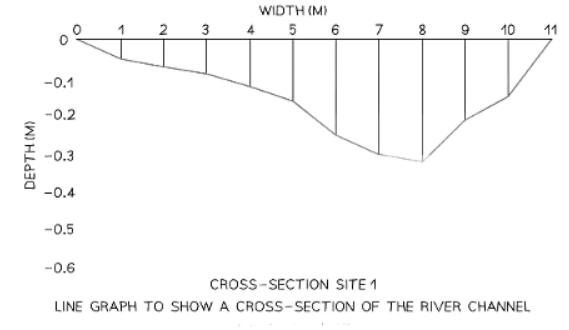
Bar chart
- A bar chart is the most basic method for presenting data
- Each bar has uniform width but varying lengths
- Bars are evenly spaced apart
- Suitable for discrete data
- Bar graphs are beneficial for comparing data sets and observing changes over time
Comparing Data
- Comparing classes or groups of data
- Changes over time


Histograms
- Histograms show continuous data
- Always use a ruler to draw the bars
- All bars should be the same width
- The top of the bar should reach the number on the side of the graph that is being represented
- There should be no gaps, all bars should be touching
- Ensure all axes are labelled and that the graph has a title


Compound or divided bar chart
- The bars in divided bar charts are subdivided to represent information, with all bars totaling 100%.
- These charts display a variety of categories.
- They are capable of showing percentages and frequencies effectively.

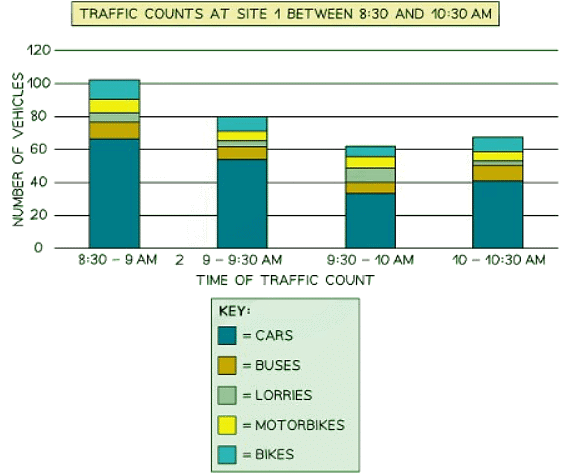
Histograms
- A histogram is a graphical representation used to display the age-sex distribution of a population.
- It can be utilized to illustrate the structure of a specific area or country.
- Patterns within histograms are easily identifiable.

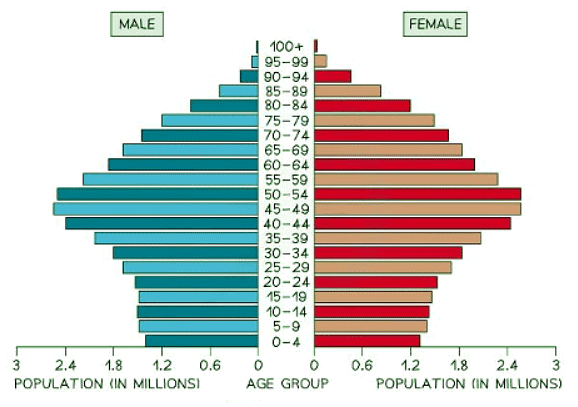
Pie Charts
- Pie charts are used to represent proportions, where the area of each segment corresponds to the proportion it represents.
- They can also be depicted as proportional circles.
- These charts can be integrated into maps to showcase variations at different locations.
- The total percentage of a pie chart must sum up to 100%.
- To calculate the degrees of each segment in a pie chart (totaling 360°), divide the percentage by 100 and then multiply by 360.
- Each segment in a pie chart should be distinctively colored.

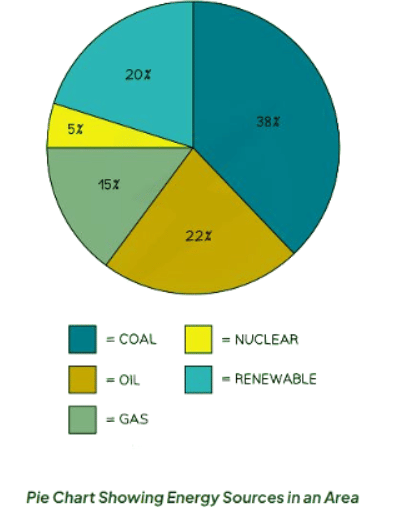
Question for Graphs & DiagramsTry yourself: What type of graph is used to display changes over time and space?View Solution
Rose diagram
- Utilize multidirectional axes for plotting data with bars.
- Compass points indicate the axis's direction.
- Applicable for displaying data like wind direction, noise levels, or light intensity.
Triangular graph
- Features axes on three sides, each ranging from 0 to 100.
- Designed for representing data divisible into three parts, usually in percentages.
- Suitable for plotting information such as soil composition, employment distribution, etc.
- Review each side carefully to ensure correct interpretation of data directions.
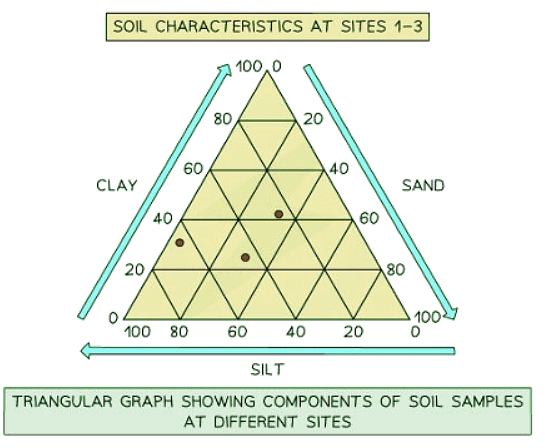
Scatter graph
- Points in triangular graphs should not be connected. They are individual data points.
- The best fit line can be added to illustrate the relationships between the points.
- Triangular graphs are utilized to depict the relationship between two variables.
- In a river study, they are particularly useful for illustrating relationships between different river characteristics, such as the width and depth of the river channel.

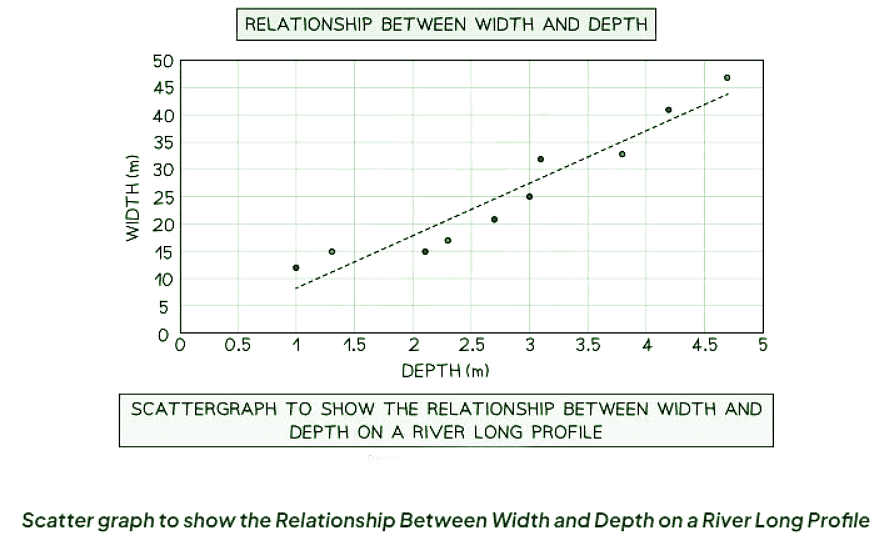
Types of correlation
Correlation helps us understand the relationship between different variables in data. There are three main types of correlation:
- Positive Correlation: When one variable increases, the other also increases. The line of best fit on a graph slopes from the bottom left to the top right.
- Negative Correlation: As one variable increases, the other decreases. The line of best fit on a graph slopes from the top left to the bottom right.
- No Correlation: When data points are scattered with no clear relationship between the variables.
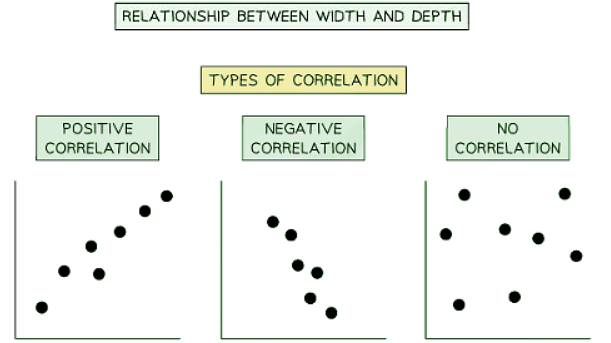
Choropleth Maps
- Choropleth maps use shading based on a predetermined key.
- Each shade represents a specific range of values.
- It's common to use various shades of a single color.
- These maps are ideal for displaying data like annual precipitation, population density, and income levels.

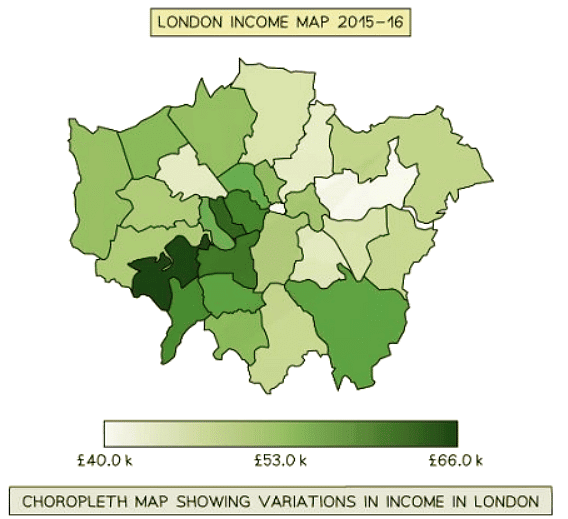 Proportional symbols map
Proportional symbols map
- Symbols on a map are depicted proportionally to the represented variable.
- Common symbols include circles, squares, or custom images.
- They can effectively showcase diverse data such as population distribution, wind farm locations, and traffic patterns.


Pictograms
- Proportional circles maps are a way of displaying data using symbols or diagrams drawn to scale.
- They are a useful way of representing data when accuracy is not critical and data is discrete.
- Years do not necessarily have to be continuous in these maps.
- Symbols in these maps do not need to be whole but can represent a proportion.
- A key is essential to indicate if the total number of objects or events that an image represents exceeds one.
How to read a pictogram
- Step 1: Carefully read the problem and identify the specific information requested from the pictograph.
- Step 2: Count the symbols corresponding to the desired information and report the count.
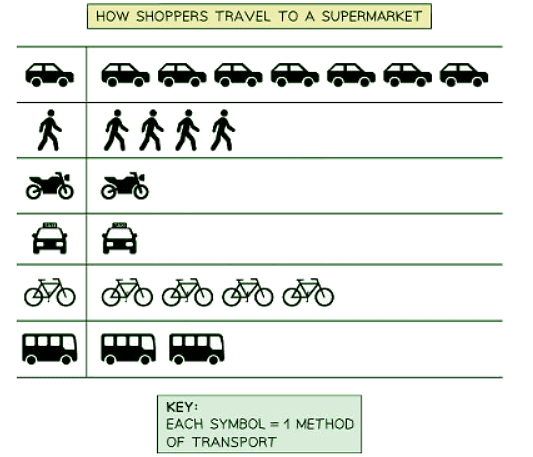
- In the illustration above, it is evident that out of 4 shoppers heading to the supermarket, only one opted for a taxi as their mode of transportation.
- The majority of shoppers, as depicted, chose to use a car for their journey to the supermarket.
Question for Graphs & DiagramsTry yourself: What type of graph is suitable for representing data divisible into three parts, usually in percentages?View Solution
The document Graphs & Diagrams | Geography for GCSE/IGCSE - Class 10 is a part of the Class 10 Course Geography for GCSE/IGCSE.
All you need of Class 10 at this link: Class 10
|
57 videos|75 docs|81 tests
|
FAQs on Graphs & Diagrams - Geography for GCSE/IGCSE - Class 10
| 1. How can divided bar charts be used to compare data in CIE IGCSE Geography? |  |
Ans. Divided bar charts can be used in CIE IGCSE Geography to compare data by visually representing different categories or subgroups within a larger data set. Each bar is divided into segments, allowing for easy comparison of the relative size or proportion of each category.
| 2. What is the significance of analyzing pie charts in CIE IGCSE Geography? |  |
Ans. Analyzing pie charts in CIE IGCSE Geography is important as they provide a visual representation of data in the form of a circle divided into sectors. This allows for easy comparison of the proportions of different categories or components within a whole data set.
| 3. How are triangular graphs utilized in CIE IGCSE Geography? |  |
Ans. Triangular graphs are used in CIE IGCSE Geography to represent data that involves three variables. The vertices of the triangle represent the three variables, and data points are plotted within the triangle to show the relationships between these variables.
| 4. In what scenarios would scatter graphs be beneficial for data analysis in CIE IGCSE Geography? |  |
Ans. Scatter graphs are beneficial in CIE IGCSE Geography for analyzing the relationship between two continuous variables. They help to identify patterns, trends, and correlations between the variables, making them useful for drawing conclusions and making predictions based on the data.
| 5. How can correlation analysis be applied in CIE IGCSE Geography to interpret relationships between data sets? |  |
Ans. Correlation analysis in CIE IGCSE Geography is used to determine the strength and direction of the relationship between two variables. It helps to identify if there is a positive, negative, or no correlation between the variables, providing valuable insights into how they interact with each other.
Related Searches

















